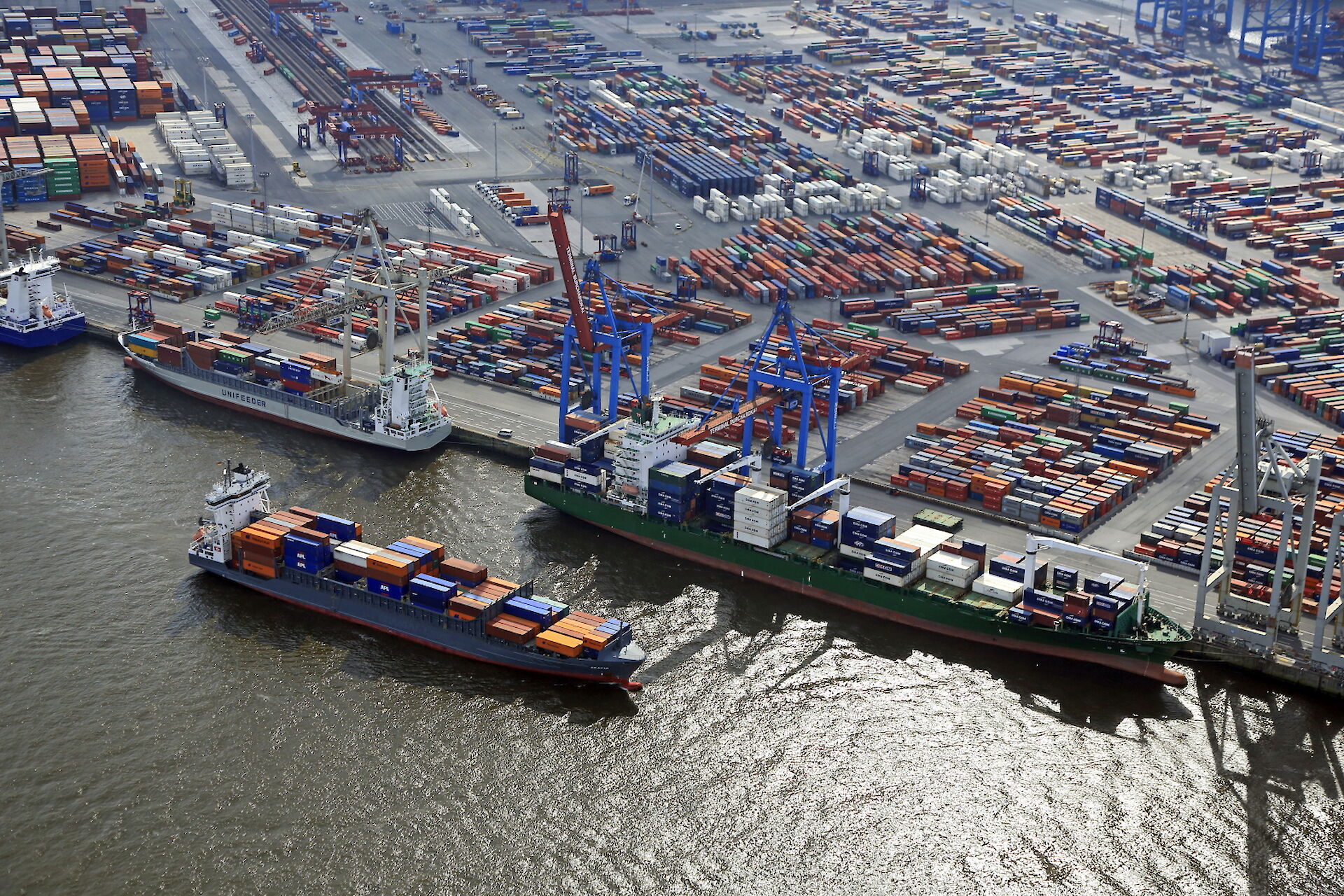

06 Mar 2014 14:03
Extremely high level of storage capacity utilisation
In 2013 and the first few months of 2014, increasing ship sizes and the associated rise in throughput for container mega-ships resulted in increased levels of fluctuation in capacity utilisation (peaks) at Hamburg’s container terminals. In addition, since early 2014 an unusual scenario has occured which many other European and Asian ports are also struggling with: a series of storms have resulted in ships arriving at the port partially with several day long delays. As a consequence the large volumes of export containers have accumulated, as they are delivered even if the vessels for their transportation have not yet arrived. This has caused the average dwell time for a container to double over the last few months. Up to 25 % of the overall storage capacity for exports is thus unavailable.
Container stores are fully productive at a level of capacity utilisation of up to 80 %. In many places, capacity utilisation is currently up from its normal level of 75 % to almost 100 %. This increase means that not all of the terminals’ processes are functioning at normal levels of productivity. Due to this overload, the data processing system is not always able to select the optimal slot and it is necessary to utilise the maximum stacking height in the yards. This considerably increases the distance the transport equipment has to cover. A lot more restowing is necessary than normal, which is a time-consuming process. All of this costs productivity.
Effects on rail and truck services
With the already usually high levels of seaborne productivity, the container yard is in any case the bottleneck at the terminals. The unusually high increase in storage capacity utilisation is therefore noticeable throughout the system. As a result, loading and discharging of truck and rail transportation has recently failed to maintain its normal high level of quality.
In addition, an extremely high volume of trucks calls at the terminals between 1 and 5 p.m. We have been unable to satisfactorily determine why so many trucks all arrive at the terminals during this period.
The terminal operators have only very limited control over the containers’ long dwell times. Nonetheless, they have already implemented measures to maintain the individual terminals’ productivity: Additional yards have been established at some terminals in order to increase storage capacities. Additional equipment is used here.
Support from forwarders and truckers
It is not currently foreseeable when the delays in ship arrivals and the resulting bottlenecks at the terminals will be eliminated. Accordingly, waiting times for truck services especially at peak times – from Monday to Friday – still cannot be ruled out. To ease this situation, short-term measures such as improved coordination with truckers are necessary. Forwarders and truckers are urgently invited to also operate in the evenings and at night as well as weekends whenever possible. Sufficient handling capacities without waiting periods are still available at these times.
Proposed medium-term improvements
In the medium term a truck appointment system (slot system) should be set up, along the lines of the system already in operation for the dock railway. A further possibility are additional empty container areas in the immediate proximity of the terminals in order to reduce the volume of truck-based transshipment within the port. Removal of the ban on use of trucks on Sundays for transshipment within the port would further improve the situation.
HHLA Container Terminal Burchardkai